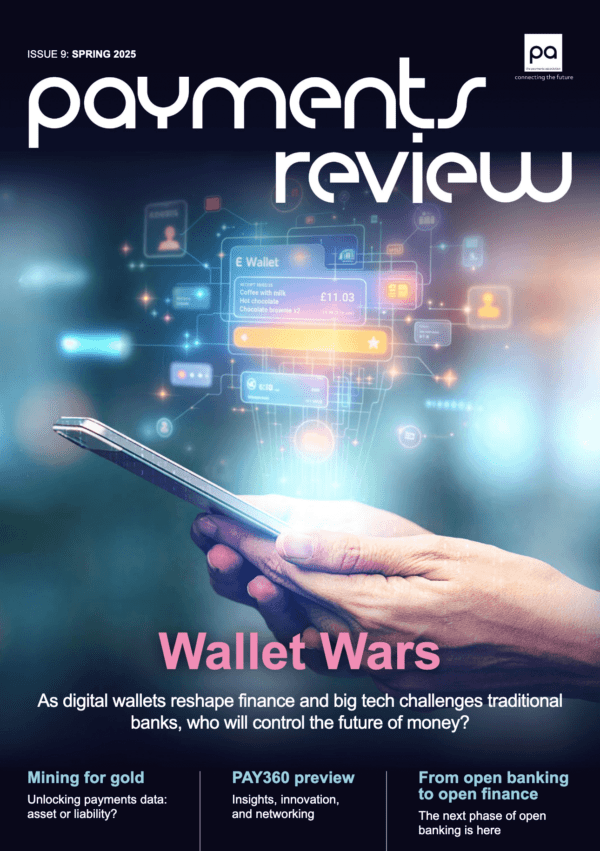By Kevin McAdam, VP Card Services & Global Strategy at Global Processing Services and Project lead for the International Trade Project at the Payments Association.
In the past year, GPS has been invited by the Department of International Trade to take part in several UK trade missions in Europe, Asia and Australia/NZ. Each mission yields its benefits and provides companies like GPS the opportunity to witness first-hand how the changes and scale of development within the payments industry is changing and gain insights into the way people make payments.
Last October, I was privileged to represent Global Processing Services (GPS) as part of the Lord Mayor of London’s business delegation to India – GPS being one of only eleven chosen companies with experience across the payment ecosystem.
I’ve tried to pin down the learnings from my trip and below are some of the main key takeaways hoping it provides a good overview of the current payment landscape in India and the opportunities that lie ahead.
The Fintech space is bustling with energy, desire for change and development
There has been a significant transformation in India over the last 10 years. The payment infrastructure and methods available have completely embraced digital – jumping a generation in payments terms straight to m-commerce:
Strong local government initiatives leading change
A number of factors have led to this massive shift. The government has driven the agenda for change and propelled India as a major economic force through three key initiatives:
- Removing corruption and money laundering activity in the ecosystem
- Improving the country’s infrastructure
- Removing the barriers of doing business and gaining inward investment.
How is the Government addressing the issue of corruption and money laundering?
The government introduced the Indian Bank Note demonetisation, which has largely helped in diminishing corruption and money laundering across the country. This has contributed in the increase of digitialisation into the economy; with a high proportion of the Indian population of 1.3bn opening bank accounts which offer access to Direct Benefits Transfers (DBT) Schemes for the payment of social benefits.
This has been achieved through the introduction of JAM account options (an abbreviation for the payment platforms Jan Dhan, Aadhaar, and Mobile use). The Jan Dhan initiative gained 562m unique bank accounts in three years, and a significant proportion of the country now have access to basic banking through technology.
The key dynamics are:
| Mobile Connections | 1.2bn |
| Number of Aadhar Enrolments | 1.19m |
| Internet Users | 462m |
| Social Media Users | 375m |
SOURCE: AXIS BANK INNOVATION LAB, INDIA, SEPTEMBER 2018
A robust platform architecture to support these initiatives
The platform architecture to support these initiatives is based on a minimal standard – simple design, easy to execute and enforce rules and regulation – with the introduction of technology through the launch of the Indian API stack, which has focused on four critical layers to the process:
- Consent – Offering increased options to users and access to payments from e-wallets, to mobile to wearables on consent
- Cashless – National Payments Council of India (NPCI) launched the Unified Payment Interface (UPI), which is an instant payment system built over the Immediate Payment Service (IMPS) infrastructure and allows users to transfer payments between bank accounts. UPI is faster than National Electronic Funds Transfer (NEFT) and offers complete interoperability for merchant payments
- Paperless – The Reserve Bank of India (RBI) approved Aadhaar-based biometric authorisation and allows bank accounts through e-KYC at banking locations to be approved with checks completed on the spot
- Presence-less – Authentication has been strengthened with biometrics and fraud has been mitigated with the nationwide launch of Aadhaar biometric identification – providing a unique identification number to all residents of India. As a result, the NPCI launched an Aadhaar Enabled Payment System (AEPS) which is a safe and convenient channel allowing micropayments with every transaction validated.
What is really driving adoption of digitalisation in India?
India is fast changing and evolving and the trade mission provided valuable insights into understanding what are the key aspects that are significantly impacting the drive to digitalisation:
- Private Sector and Financial institutions
Whilst considerable take-up in the public sector has been achieved, the exponential growth for digitalisation has been driven by the private sector and major financial institutions. For example, The State Bank of India (SBI), HDFC and ICICI Bank all offer an extensive range of financial services, with development also encouraged by UK operators such as Barclays and HSBC.
- GST changes
Inward investment has supported key infrastructure sectors including roads and highways. Doing business has been made easier through the Real Estate Regulatory Act, which has introduced controls in the use of funds.
- Technology, regulation and one-stop solutions
Encouragingly the richness of platform technology and the experience with UK and Australian challenger banks had proceeded our visit and Indian providers were looking at operators who could offer one-stop solutions. The Indian regulatory framework is friendly, adopting the UK/European model, with AML regulation supporting the JAM accounts. PSD2 along with Open Banking is being applied, although there is a need to manage some of the on-soil restrictions in relation to data management and storage.
The market is competitive, major providers have a presence and growing demand for aggregators has provided the growth for platforms like Paytm and Google Tex. Whilst digital payment growth is significant, the market is still undeveloped and high growth will continue. Mobile wallets/apps are the new entrants with a clear focus on enhancing customer experience.
To be able to assess the market, have access to key decision makers and gain quality intelligence from large conglomerates to emerging players was only possible through being part of a trade delegation. The support from the Department of International Trade, and through the Lord Mayor of City of London team is hard to put a value on how it supports industry across a number of verticals. India and all the companies that shared their vision with the delegation fully embraced showcasing their business opportunity to the UK delegation.
In summary, in spite of some of the challenges faced within India from technology, governance and regulatory standpoints, the growth for FinTech players in the digital payment space is unparalleled.
About Project International Trade
The Payments Association’s Project International Trade looks to encourage the growth and development of Payments Association member companies globally, and to promote the UK as the global hub for FinTech and PayTech expertise, experience and innovation.
Project International Trade delivers this by:
- To encourage the growth of early stage FinTech and PayTech companies around the world through the support offered by the Payments Association
- To support trade between organisations and Payments Association members that use payments outside the EU
- To promote awareness of the Payments Association as the global hub for payments expertise and innovation
- To stimulate the adoption of new payments products and services in emerging markets
- To collaborate and innovate with Payments Association Partner Associations now established in Asia, Africa and Eastern Europe and provide insight between associations on market opportunities
To influence external stakeholders with government, third sector and other association bodies (both UK and non-UK) to support payment development and policy



























